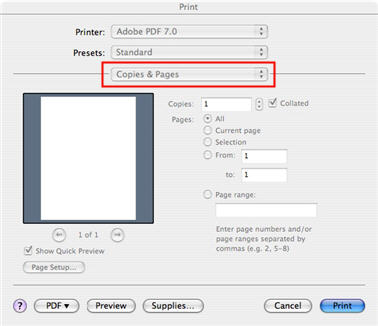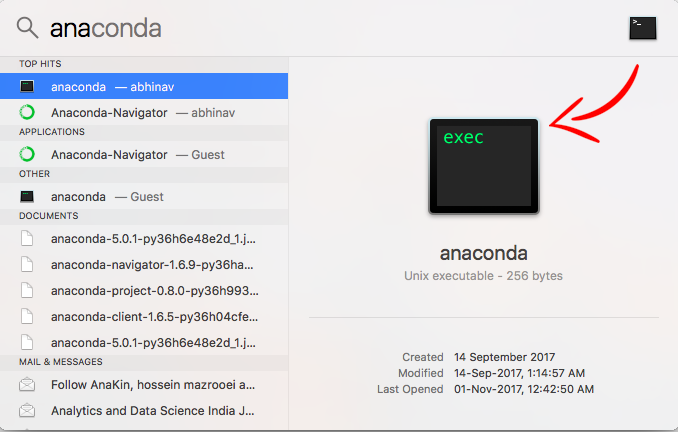The top command on OS X is pretty crappy. The one included with most Linux distros allows you to change the sort-by column using, there is a coloured mode (by pressing the z key), and a bunch of other useful options. Reset PRAM/NVRAM: Command (⌘)—Option (⌥)—P—R, then release the keys after you hear the startup sound for a second time Reset SMC: Shut down your Mac, and then press and hold the left-side Shift (⇧)—Control (⌃)—Option keys along with the Power (⎋) button, all at the same time, until the computer turns on.
CommandBox is a standalone, native tool for Windows, Mac, and Linux that will provide you with a Command Line Interface (CLI) for developer productivity, tool interaction, package management, embedded CFML server, application scaffolding, and some sweet ASCII art. It seamlessly integrates to work with any of our *Box products but it is also open for extensibility for any ColdFusion (CFML) project as it is also written in ColdFusion (CFML) using our concepts of CommandBox Commands. It tightly integrates with our contribution community; ForgeBox, so developers can share modules world-wide.
Built-in help is completely integrated for every command, so you can always know how to work with CommandBox. You can pop open a CommandBox shell in your terminal window and manually type commands, or even automate things externally via the CommandBox binary box with your OS's native shell and create awesome command recipes for automation, building, deploying, you name it!
Package Management
CommandBox also functions as a package management tool which integrates seamlessly with ForgeBox, our community of ColdFusion (CFML) projects, but can also integrate with git,svn,http, ftp and many more code endpoints. We have created a package descriptor we lovingly call box.json which describes your package, dependencies, dev dependencies, ForgeBox data and can also be used as a settings descriptor for CommandBox commands. Any project that contains a box.json in its root can be installed by CommandBox with a simple command: box install {package}. CommandBox will be smart enough to determine package dependencies, local artifact tracking and much more. You can even initialize a CommandBox package using: box init and get cooking with CommandBox packages.
Become a sponsor to help the development of this product.
Sample box.json

Application Scaffolding
CommandBox has a plethora (Yes, I said Plethora) of commands for quickly building out ColdBox/CommandBox/TestBox applications. Create a new ColdBox app with a simple command:coldbox create app, add a handler with coldbox create handler MyHandler. You can even get actions added to it, views created, and BDD integration tests stubbed out at the same time. This can bring new productivity for people who like to live on the command line and especially for those who want to be able to automate workflows. Check it out yourself, type coldbox create help and see all the creation helpers available.
Embedded Server
One of the cool things CommandBox brings to the table is the ability to spin up an ad hoc, lightweight, ColdFusion (CFML) server (Lucee or Adobe ColdFusion) in any directory from the command line. Simply change your working directory to the root of your app, type server start and a super-fast server spins up on a new port running your code. When you're done type server stop from that directory or use the little icon that's showed up in your system tray. You can even get the server's logs, status and much more.
Extensible Via ColdFusion (CFML)
So one of the most interesting things about CommandBox is that the actual commands are written in ColdFusion (CFML) itself! CommandBox is small, lightweight, integrated at the operating system level, but actually running on CFML powered by WireBox. This means you will can extend it with your own commands that do cool stuff for any framework, or automate repetitive tasks you're tired of doing every day.
Sample CommandBox Command:Command For Mac Terminal
You can download CommandBox for any flavor of operating system shown below:
No JRE Included
The following downloads do not include a Java Runtime.
With JRE Included
The following downloads include a Java Runtime.
Installation

The following installations are supported:
- Windows exe
- Mac/Linux executable binary
- Manual installation
- Homebrew (for Mac)
- Linux (Redhat)
- Linux (Debian)
- Linux Yum
- Linux APT
Read up on each of these methods here in our installation docs.
Below you can find all the print books you can purchase about CommandBox. You can also find them available in print and kindle format via Amazon and Amazon Kindle Store in your location around the world.
- Command Line for ColdFusion (CFML)
- Operation System integration for executing commands
- Ability to create and execute commands built using ColdFusion (CFML)
- ForgeBox integration for cloud package management and installations
- ColdBox Platform, TestBox, and CommandBox CMS Integrations
- Integrated servlet server with rewrite capabilities
- Ability to create command recipes and execution
- REPL (Read-Evaluate-Print-Loop) console for immediate ColdFusion (CFML) interaction
- Ability to interact with user via CLI and create workflows and installers
- Ability to execute workflows and tasks
- Built-in Help system
CommandBox also provides an official Docker image, which allows you to leverage its capability to orchestrate live servers in multi-tier deployments. Since, CommandBox allows you to configure your entire CFML engine environment from a single file in the root of your project, packaging or mounting your CFML application in to a running CommandBox image container allows you to stand up your application in Docker containers in a matter of seconds.
To stand up an image for testing purposes, simply run:
This will start up a test instance of the image which should give you a 'Commandbox is Up and Running on Docker!' page when you navigate to your container URL.
Copy files.
In -R mode, cp will continue copying even if errors are detected.
Note that cp copies hard linked files as separate files. If you need to preserve hard links, consider using tar, cpio(1), or pax(1) instead.
For each destination file that already exists, its contents are overwritten if permissions allow. Its mode, user ID, and group ID are unchanged unless the -p option was specified.
In the second synopsis form, target_directory must exist unless there is only one named source_file which is a directory and the -R flag is specified.
Many users find it useful to set an alias cp='cp -iv' in bashrc, so that progress is always displayed and files do not get overwritten without a confirmation.
Permissions:
Appropriate permissions are required for file creation or overwriting.
If the source file has its set user ID bit on and the user ID can not be preserved, the set user ID bit is not preserved in the copy's permissions. If the source file has its set group ID bit on and the group ID cannot be preserved, the set group ID bit is not preserved in the copy's permissions.
If the source file has both its set user ID and set group ID bits on, and either the user ID or group ID cannot be preserved, neither the set user ID nor set group ID bits are preserved in the copy's permissions.
If the destination file does not exist, the mode of the source file is used as modified by the file mode creation mask (umask).
If the source file has its set-user-ID bit on, that bit is removed unless both the source file and the destination file are owned by the same user.
If the source file has its set-group-ID bit on, that bit is removed unless both the source file and the destination file are in the same group and the user is a member of that group.
If both the set-user-ID and set-group-ID bits are set, all of the above conditions must be fulfilled or both bits are removed.
Command For Mac Id
Symbolic links are always followed unless the -R flag is set, in which case symbolic links are not followed, by default. The -H or -L flags (in conjunction with the -R flag) cause symbolic links to be followed as described above. The -H, -L and -P options are ignored unless the -R option is specified. In addition, these options override each other and the command's actions are determined by the last one specified.
If cp receives a SIGINFO (see the status argument for stty(1)) signal, the current input and output file and the percentage complete will be written to the standard output.
The -v and -n options are non-standard and their use in scripts is not recommended.
The cp utility exits 0 on success, and >0 if an error occurs.
Examples
Copy a file in the current folder
$ cp old.txt new.txt
With variables make sure you quote everything:
$ cp '$SOURCE' '$DEST'
Copy a file in the current folder to your 'Documents' folder
$ cp old.txt ~/Documents
Copy the file to the 'Documents' folder and rename the copy 'new.txt'
$ cp old.txt ~/Documents/new.txt
Copy all .jpg files to the Documents folder
$ cp *.jpg ~/Documents
Copy the 'Documents' folder to 'Documents backup'.
The quotes are needed because of the space in the folder name.
$ cp -R Documents 'Documents backup'
Copy all .jpg files to the CA folder, and for those with 'New York' in the filename, replace with 'California_'
the '${f/New York/California_}' is an application of bash parameter expansion
$ mkdir CA
$ for f in *.jpg; do cp '$f' 'CA/${f/New York/California_}'; done
Copy the entire /Users folder (including subfolders), preserving
file ownership and permissions but not resource forks.
Root access is required to use -p, so the example uses sudo to get root access temporarily.
$ sudo cp -Rp /Users '/Users backup'
“The white man knows how to make everything but he does not know how to distribute it” - Sitting Bull
Command For Mac Address
Related macOS commands:
Command P For Mac Shortcut
cpio - Copy files to and from archives.
dd - Data Duplicator - convert and copy a file.
ditto - copy files and folders (Can preserve Apple resource forks, type & creator).
install - Copy files and set attributes.
mv - Move or rename files or directories.
rcp - Remote copy.
tar - Store or extract files to an archive (allows symbolic links to be copied as links).
umask - Users file creation mask.
xattr - Display and manipulate extended file attributes.
Some rights reserved
Command P Mac
